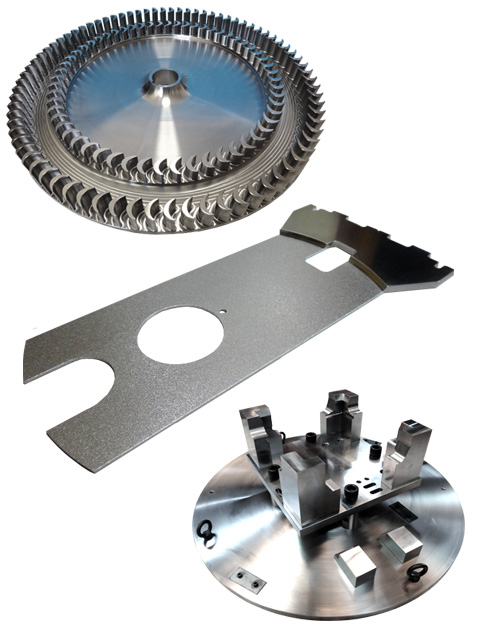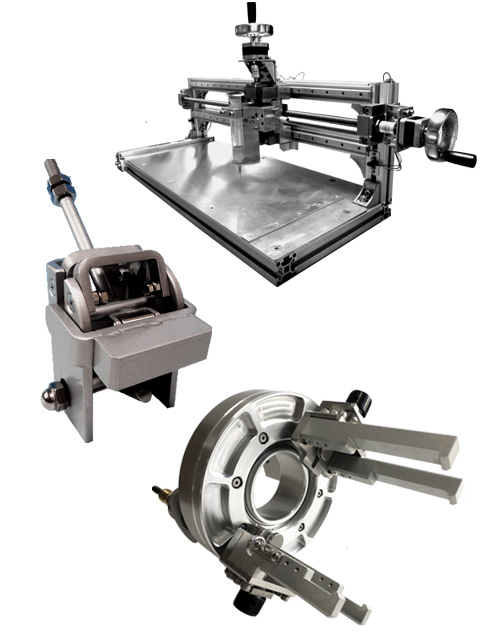Precision: SME, Aerospace, Energy
Craftsmanship: Medical device
Welcome!!
Ogawa Technical Works Co., Ltd. manufactures metal products and parts for cutting-edge fields such as aircraft, semiconductors, and medical, as well as architecture and all other fields.
Our strength lies in our comprehensive ability to flexibly combine processes that make full use of a variety of manufacturing methods, from manufacturing using state-of-the-art equipment such as 5-axis processing machines to handwork (welding, polishing, assembly, etc.) that only skilled craftsmen can perform.
In addition to manufacturing, we can also assist with upstream processes such as design and development support using 3D CAD.
Customers who are looking for a new supplier and customers who have no knowledge of manufacturing are also welcome.
If we can be of any assistance to you, please feel free to contact us.
Frame structure, Welding, Polishing, Assembly
We handle processing processes that can only be done by hand, such as buffing, welding, and assembly.
We also specialize in the production of frames, frames, and trolleys using can manufacturing, as well as general-purpose sheet metal processing.
Skilled workers are retiring one after another, and there is now a serious shortage of workers in this type of handwork, but we are working to pass on this handwork craftsmanship to young people as soon as possible, and have established a system that will allow us to continue supplying this work for the next 30 years. Ta.
Please leave the manufacturing, welding, and polishing of medical equipment, food machinery, and physical and chemical equipment to us.
(Registered as a medical device manufacturer)
Precision parts
We manufacture parts for cutting-edge fields such as semiconductor manufacturing equipment, aircraft, medical and physical science, and industrial machinery.
Through collaboration with over 100 partner companies in Japan, we are able to undertake any manufacturing process.
We have a lot of experience in machining complex shapes using advanced machine tools such as 5-axis processing machines, and in complex process parts by combining various machining processes.
Engineering support
We will assist you with the overall design and development of new equipment, automated machinery, and jigs.
Since it is possible to design using 3D CAD, you can proceed with development while checking that we are meeting your needs at any time.
In addition, if you have the actual item but no drawings, we also accept "reverse engineering", which converts the actual item into 3D data and creates manufacturing-ready drawings.
Production records
| Field | Item | Detail |
|---|---|---|
| Medical device | Medical device Forceps | Manufacturing of medical devices Medical parts |
| Food processor | Mixer puddle Frame structure | Design and manufacturing of special puddle All around meldment and polishing for stainless parts |
| Scientific equipment | Frame strucure Component parts | Tank, Sink, Funnel Hopper, Body frame, Panels, Covers |
| Other Frame and sheet metals | Architectural metal parts Industrial metal parts | Steps, Gates, Stairs, Handles, Cabinets Wagon, Carriage, Showcase Stay, Bracket, Other metal parts |
| Semiconductor manufacturing Equipment | Precision parts | Critical parts around wafer Cassette, Deposition ring, Arms Material: Stainless, Alluminum alloy, Titanium, PEEK, PTFE Surface treatment: Plating, Anodize, Paint Cleaning and vacuum packing |
| Aerospace | Precison parts - Structural parts - Critical parts around engine | Milling including 5-axis processing Quality control for customer requirements |
| Other | Industrial parts | Complex shape: Impeller, Turbine blade, Parts fieder High speed rotating parts: Rotor blade, Screw One stop ordering style including heat treatment, each processing and surface treatment Partnership with more than 100 factories Machining: Milling, Lathe, Wire cutting, Grinding Sheet metal: Laser cutting, Tarret punching, Press, Sppining Vending: Press brake, Pipe vending, Hopper vending Welding: TIG weldment, Laser weldment, EBW, Brazing Surface treatment: - Polishing(Liquid, Electrolytic, Buff) - Plating(Gold, Silver, Crome, Zinc, Nickel) - Painting(Baked paint, Urethane paint, Teflon coating) Heat treatment: - Quenching and tempering - Induction hardening - Anneal |
| Infrastructure Energy | Jigg and equipment | Engineering service and development support |
| Healthcare | Healthcare equipment Training machine | Engineering service and development support |
| Other eningineering | 3D designing Reverse engineering | 3D scanning and exact measurement by CMM 3D designing by 3D CAD |
Manufacturing knowledge
- 019 Milling: What is a 5-axis machining?
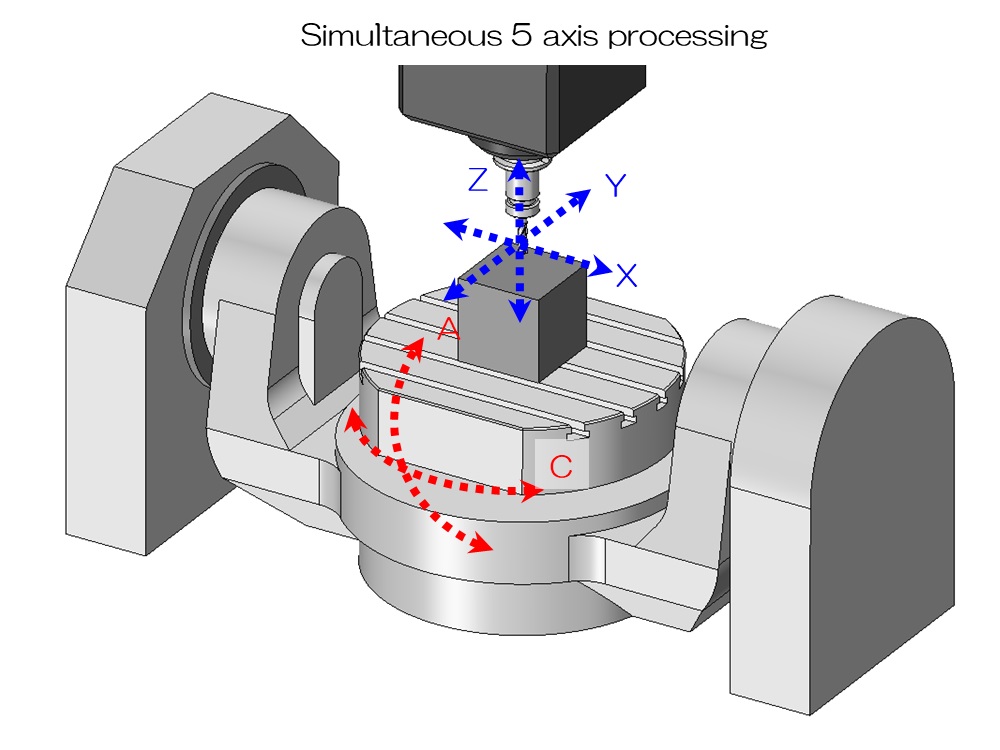 We will introduce an overview of the 5-axis machining machine, one of the most advanced cutting machines, and the parts that can be made with 5-axis machining. It is suitable for manufacturing high value-added parts such as aircraft parts and impellers.
We will introduce an overview of the 5-axis machining machine, one of the most advanced cutting machines, and the parts that can be made with 5-axis machining. It is suitable for manufacturing high value-added parts such as aircraft parts and impellers. - 018 Milling: Avoiding undercut by design change
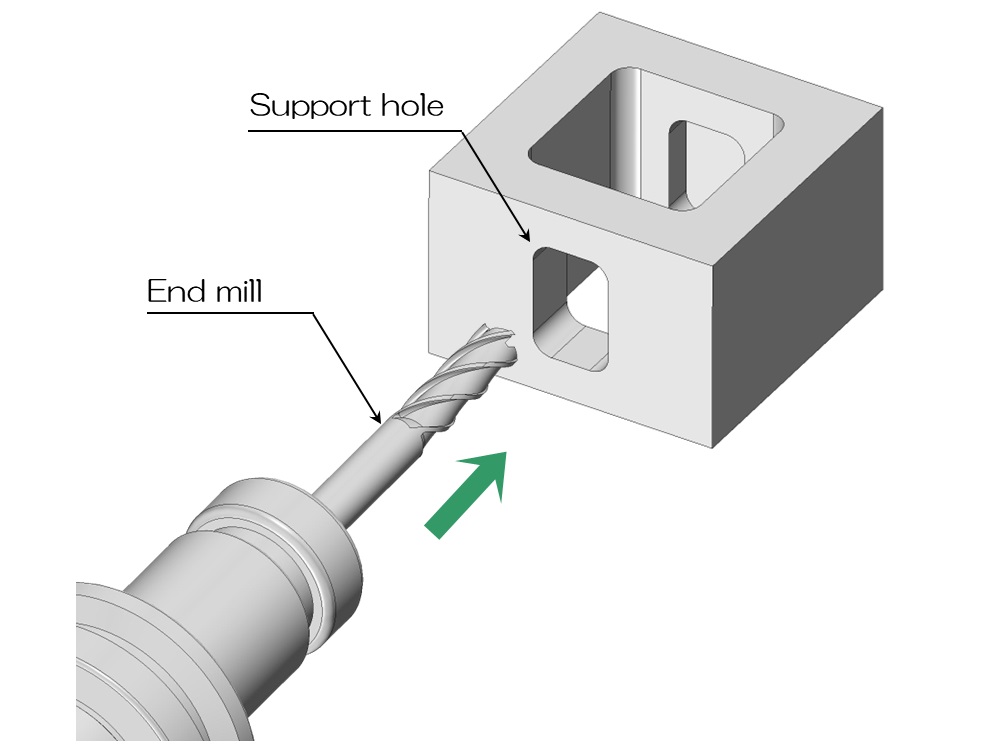 We will introduce examples of changes made to the design of the undercut section. There are methods such as making the shape go through, making it into a shape that can be processed with a T-slot cutter, adding a shape for processing, and dividing it.
We will introduce examples of changes made to the design of the undercut section. There are methods such as making the shape go through, making it into a shape that can be processed with a T-slot cutter, adding a shape for processing, and dividing it. - 017 Milling: Undercut that are difficult for milling
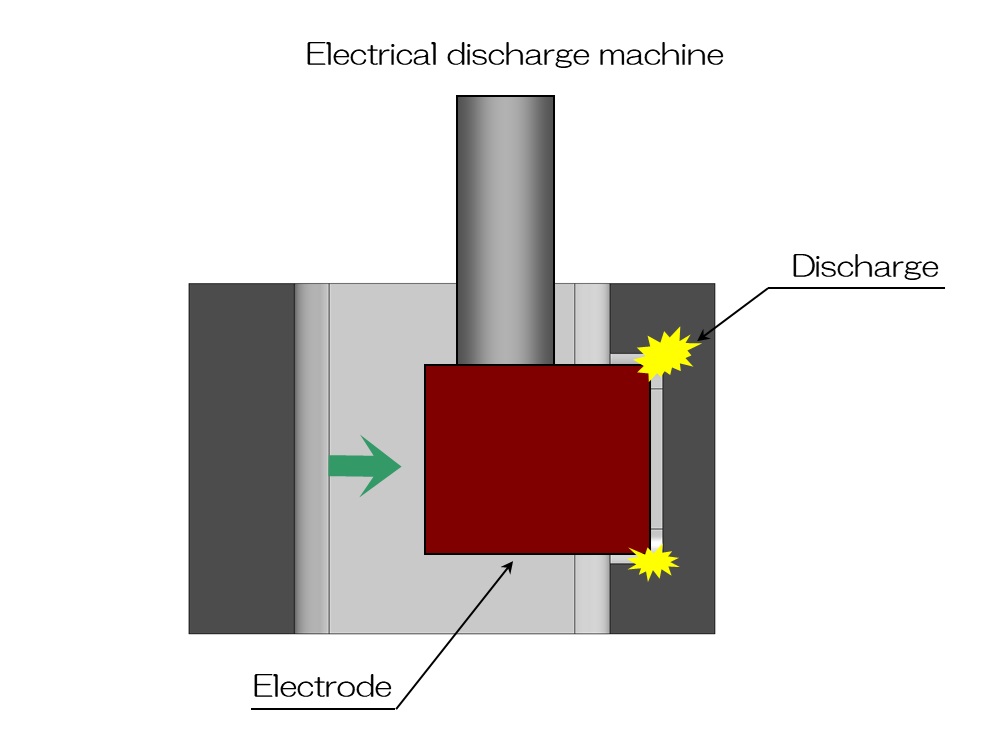 We will explain examples of undercut shapes that are difficult to cut and how to process them. Machining by die-sinker electric discharge or welding is also possible, but the cost and construction time may be significantly higher.
We will explain examples of undercut shapes that are difficult to cut and how to process them. Machining by die-sinker electric discharge or welding is also possible, but the cost and construction time may be significantly higher. - 016 Milling: The best way called design change!
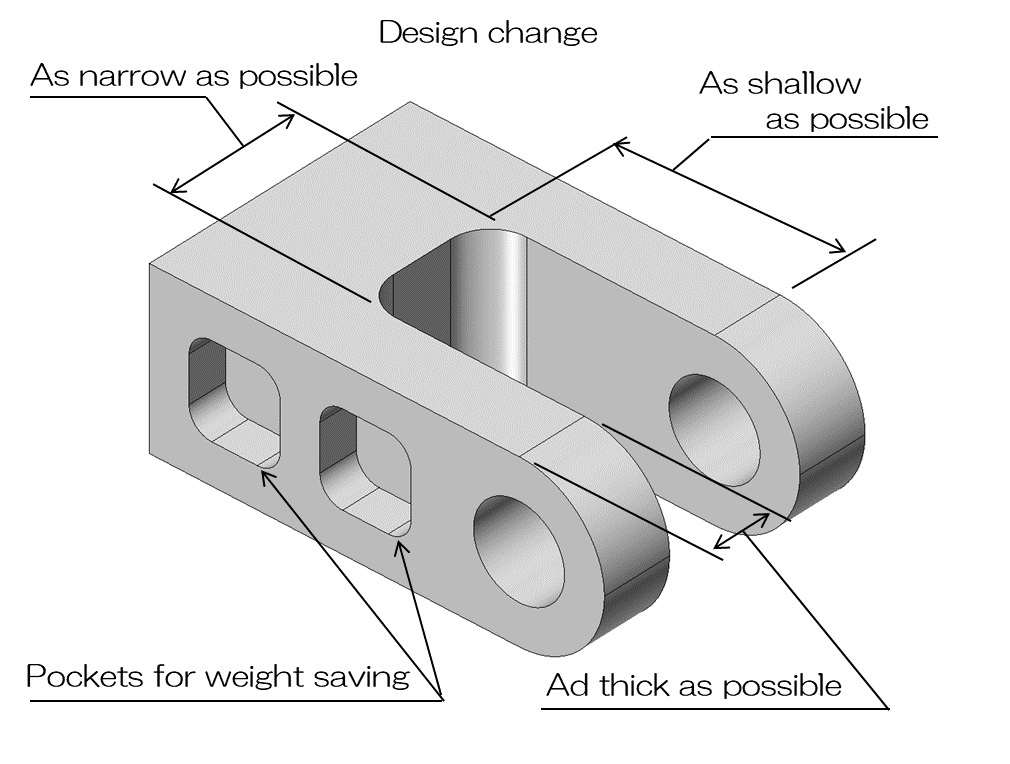 We will introduce typical examples that are prone to deformation, such as bifurcated shapes and long holes near the edges. By changing the design to a shape that is less prone to deformation, manufacturing will proceed more smoothly.
We will introduce typical examples that are prone to deformation, such as bifurcated shapes and long holes near the edges. By changing the design to a shape that is less prone to deformation, manufacturing will proceed more smoothly. - 015 Milling: Avoiding detortion by design
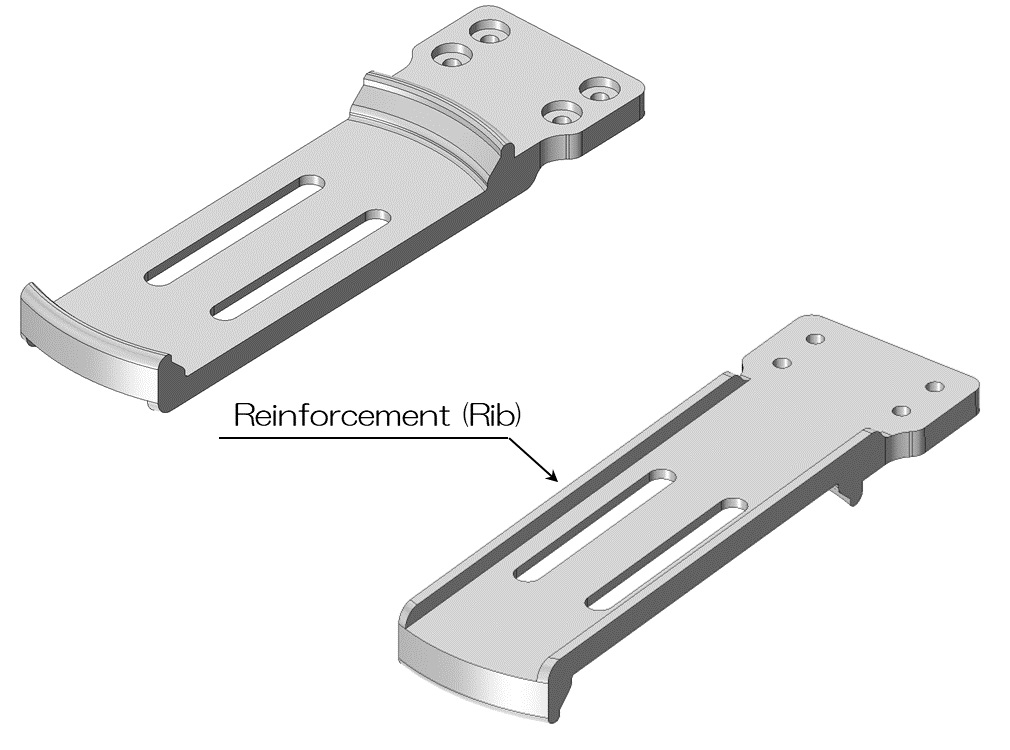 We will explain ways to suppress deformation on the design side when designing thin parts. Possible methods include reducing the amount removed, increasing wall thickness, and adding reinforcement.
We will explain ways to suppress deformation on the design side when designing thin parts. Possible methods include reducing the amount removed, increasing wall thickness, and adding reinforcement. - 014 Milling: Destortion of thin shape
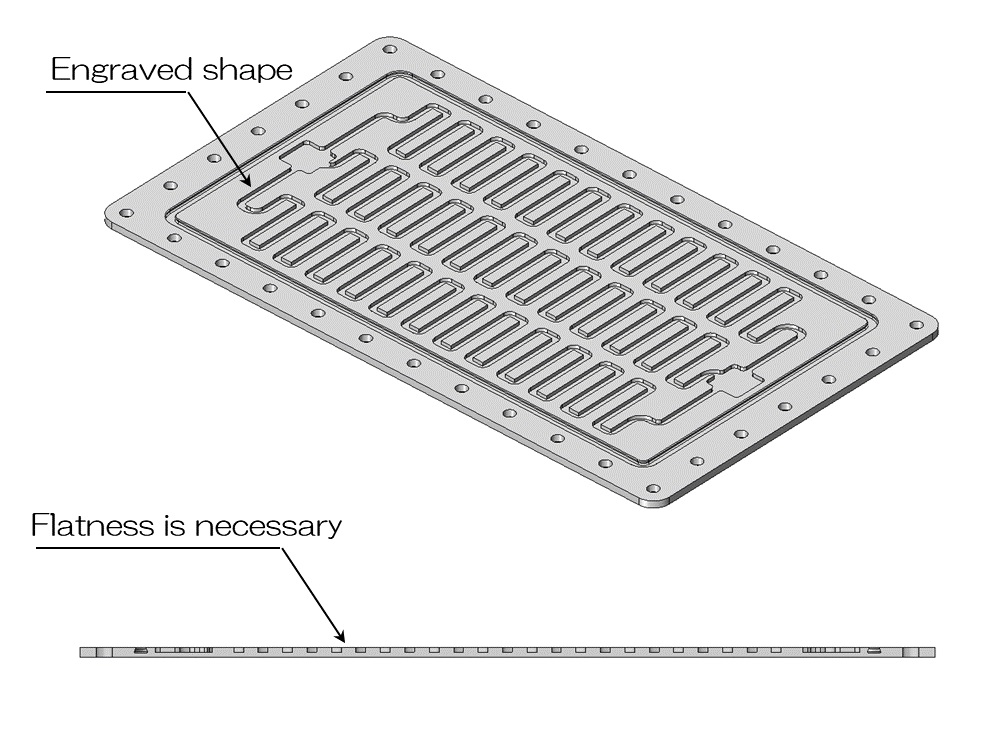 Milling is a removal process, so when processing thin objects, deformation inevitably occurs due to stress. Here are some examples of shapes that are easy to deform.
Milling is a removal process, so when processing thin objects, deformation inevitably occurs due to stress. Here are some examples of shapes that are easy to deform. - 013 Milling: 3D processing and surface roughness
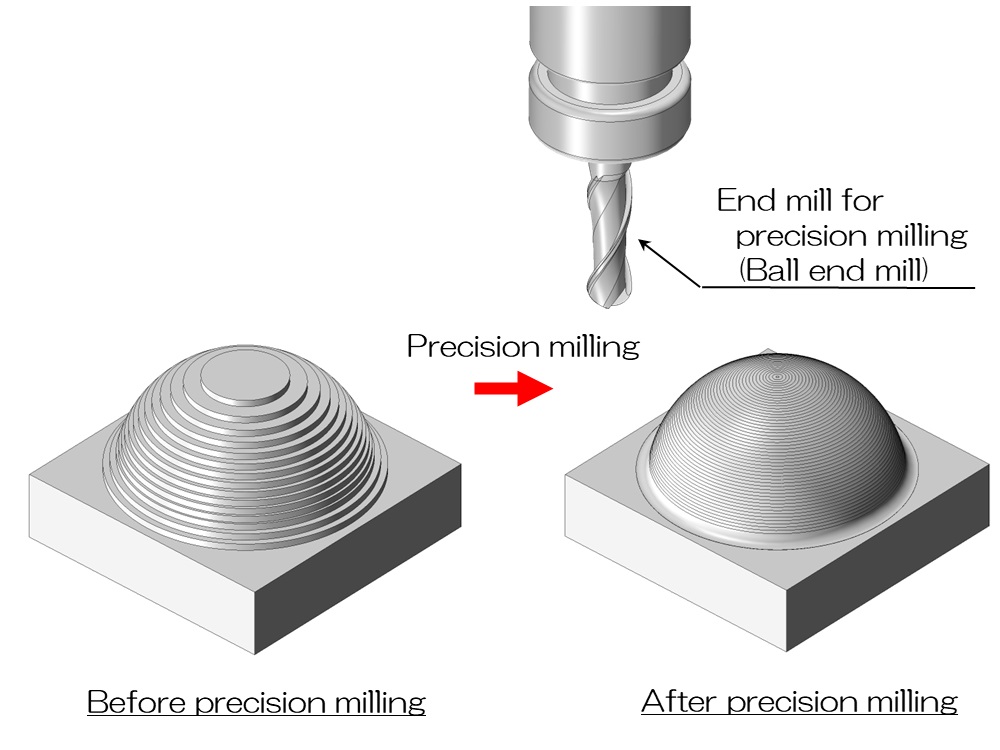 We will explain how to process three-dimensional shapes and surface roughness by cutting using a ball end mill. I think it's a good idea to keep in mind that there are rough processing and finishing steps, and each has a different purpose.
We will explain how to process three-dimensional shapes and surface roughness by cutting using a ball end mill. I think it's a good idea to keep in mind that there are rough processing and finishing steps, and each has a different purpose. - 012 Milling: Welcome to the 3D processing world!
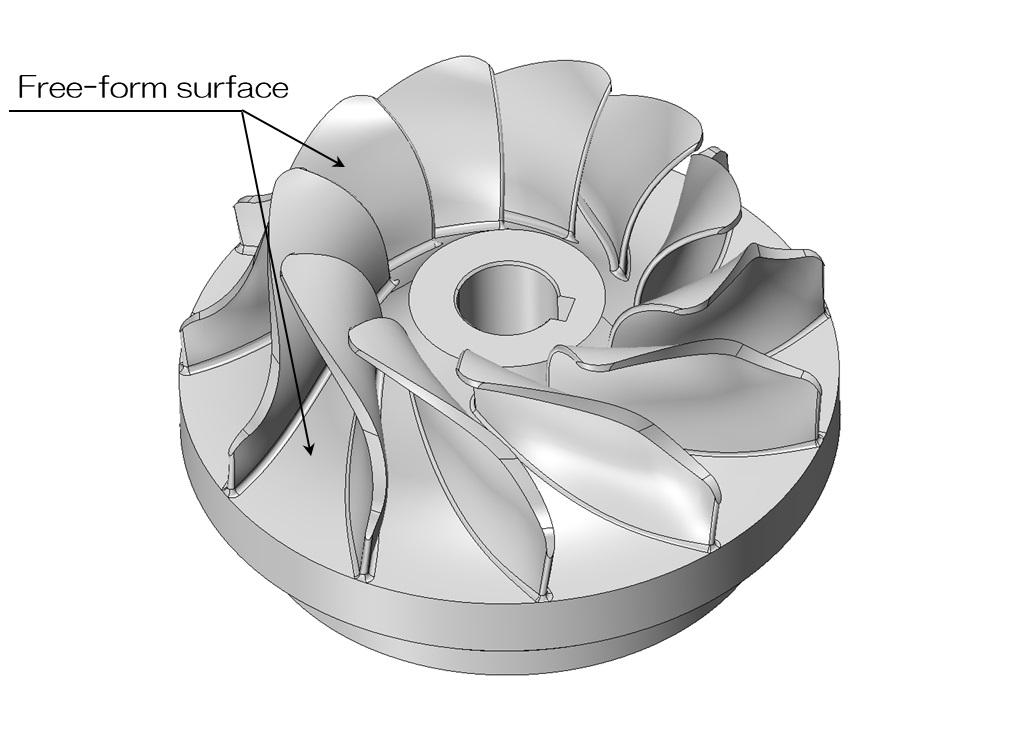 We will introduce an example of 3D processing that allows you to freely process shapes in the X, Y, and Z directions. By processing free-form surfaces three-dimensionally, it is possible to create various complex shapes such as aircraft parts, jigs for molded products, impellers, reliefs, etc.
We will introduce an example of 3D processing that allows you to freely process shapes in the X, Y, and Z directions. By processing free-form surfaces three-dimensionally, it is possible to create various complex shapes such as aircraft parts, jigs for molded products, impellers, reliefs, etc. - 011 Milling: Actual setup work
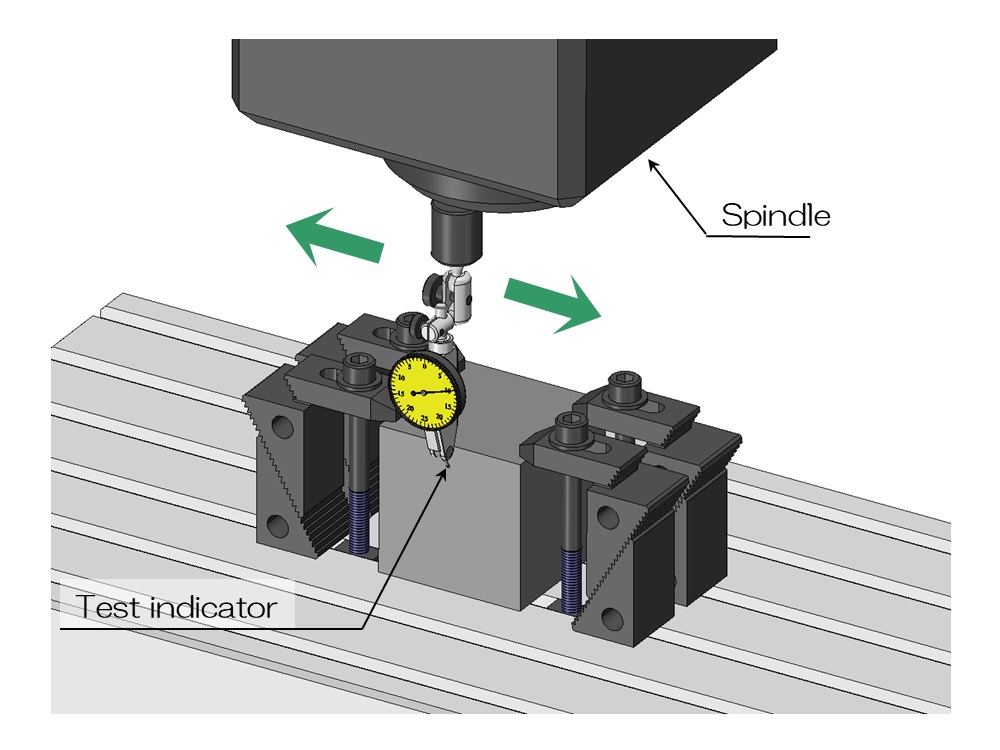 We will explain the details of the setup work for cutting. There are many steps within setup work, such as fixing materials, aligning them, setting the origin, installing tools and measuring length, and creating and inputting NC programs.
We will explain the details of the setup work for cutting. There are many steps within setup work, such as fixing materials, aligning them, setting the origin, installing tools and measuring length, and creating and inputting NC programs. - 010 Milling: Design considering with setup changes
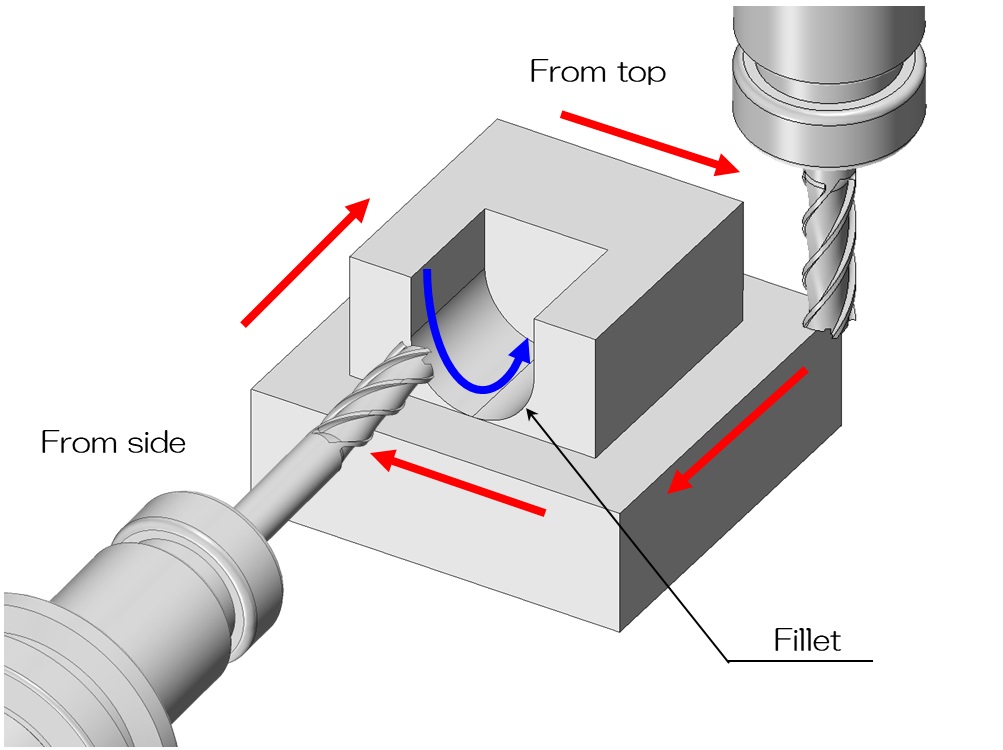 By aligning the machining surfaces, it is possible to reduce setup changes and the number of machining steps. Here are some examples of such rational design changes.
By aligning the machining surfaces, it is possible to reduce setup changes and the number of machining steps. Here are some examples of such rational design changes. - 009 Milling: Working surface and setup change
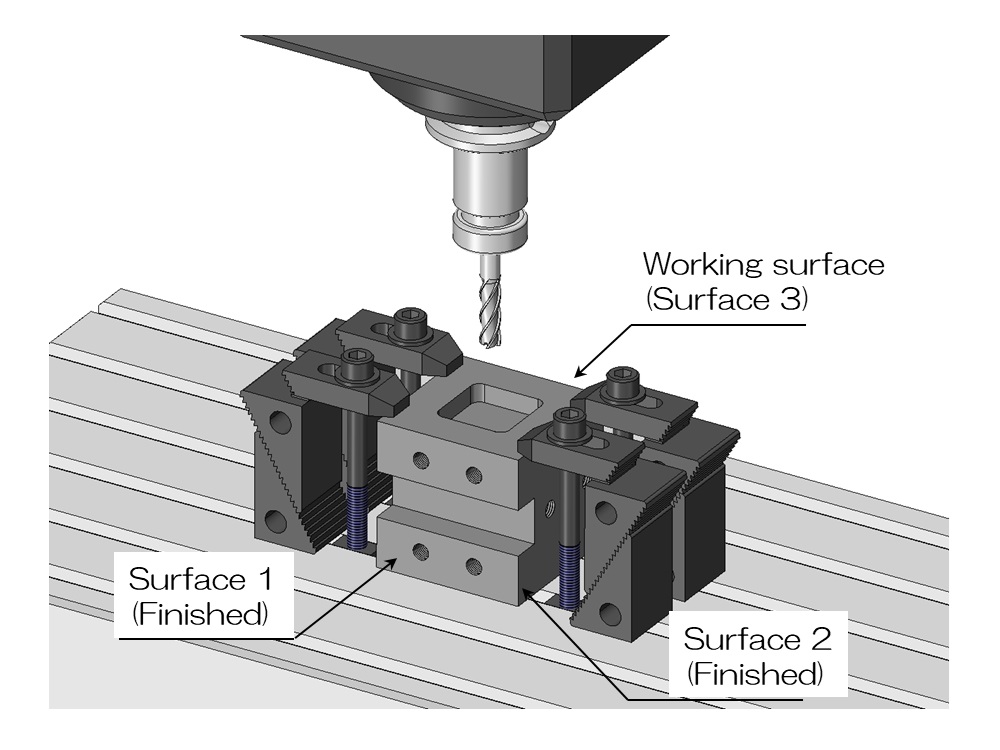 We will explain the machining surfaces that are important in cutting and the concept of changeover during machining. Reducing the number of processed surfaces reduces the number of processed surfaces, which leads to cost reductions.
We will explain the machining surfaces that are important in cutting and the concept of changeover during machining. Reducing the number of processed surfaces reduces the number of processed surfaces, which leads to cost reductions. - 008 Milling: Types and features of milling machines
 We will introduce the types and characteristics of cutting machines. Milling-type processing machines can be broadly classified into general-purpose milling cutters, NC milling cutters, and machining centers, but their characteristics and uses also differ.
We will introduce the types and characteristics of cutting machines. Milling-type processing machines can be broadly classified into general-purpose milling cutters, NC milling cutters, and machining centers, but their characteristics and uses also differ. - 007 Milling: Seemingly simple but difficult hole machining
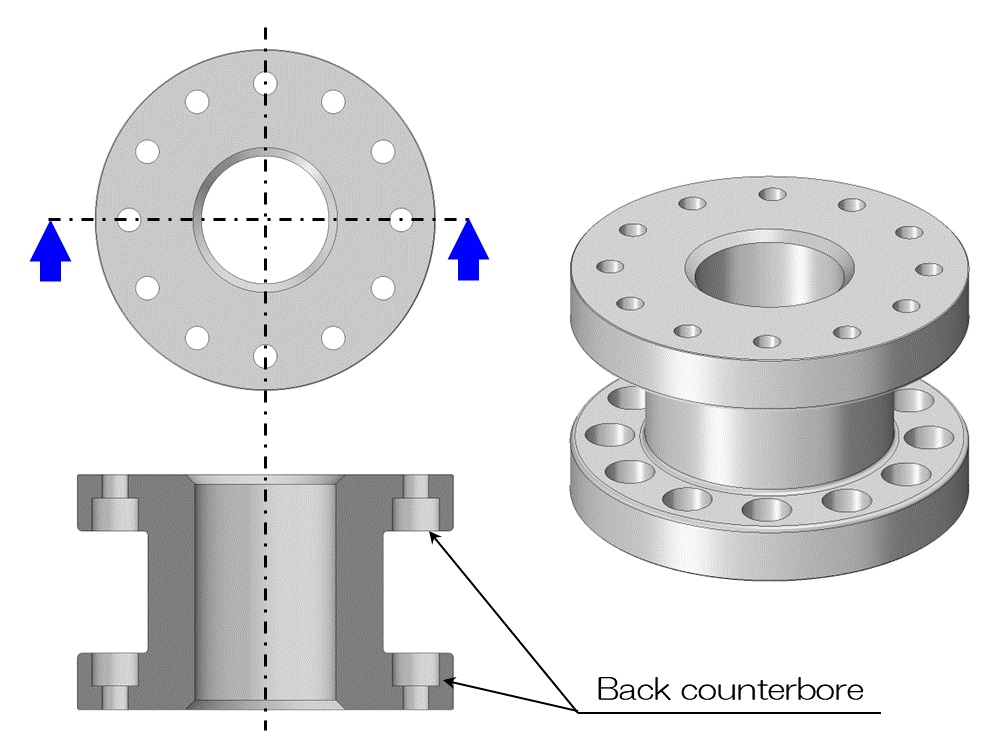 Here are some examples of hole machining that are difficult to achieve. There are holes that are difficult to realize due to processing reasons, such as back counterbores, blind holes in undercuts, and deep hole shapes.
Here are some examples of hole machining that are difficult to achieve. There are holes that are difficult to realize due to processing reasons, such as back counterbores, blind holes in undercuts, and deep hole shapes. - 006 Milling: Example of hole machining trouble
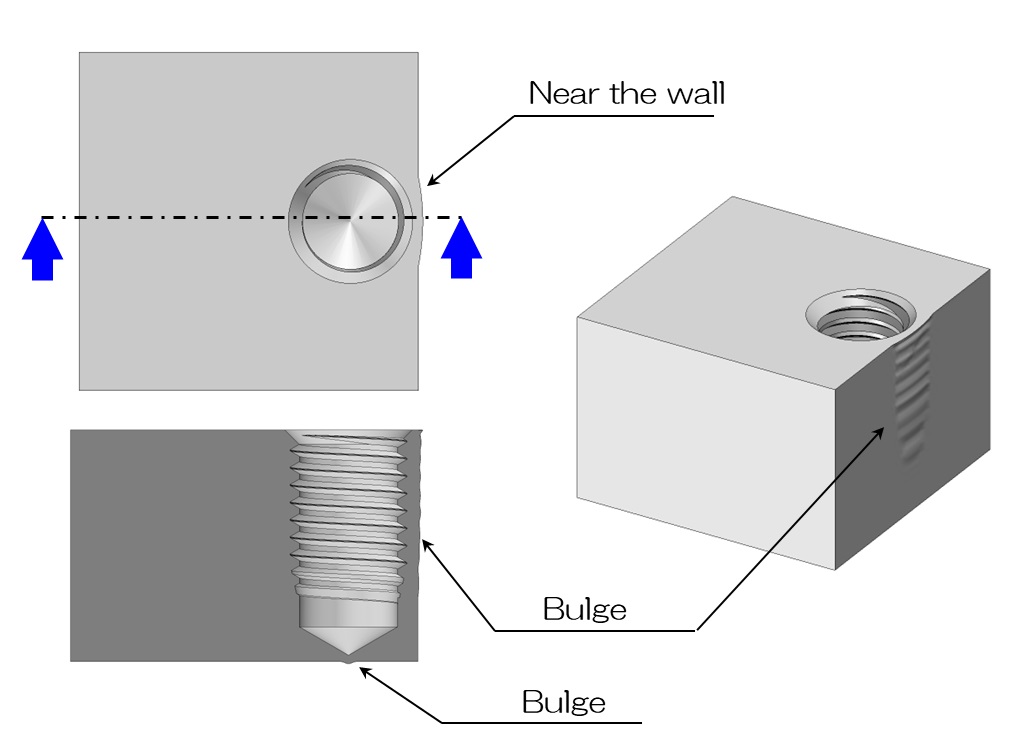 Hole drilling is a process that is extremely troublesome. We will introduce examples of problems related to hole machining, such as holes that are too deep and curved, or too close and raised, and how to deal with them.
Hole drilling is a process that is extremely troublesome. We will introduce examples of problems related to hole machining, such as holes that are too deep and curved, or too close and raised, and how to deal with them. - 005 Milling: Basics of hole machining
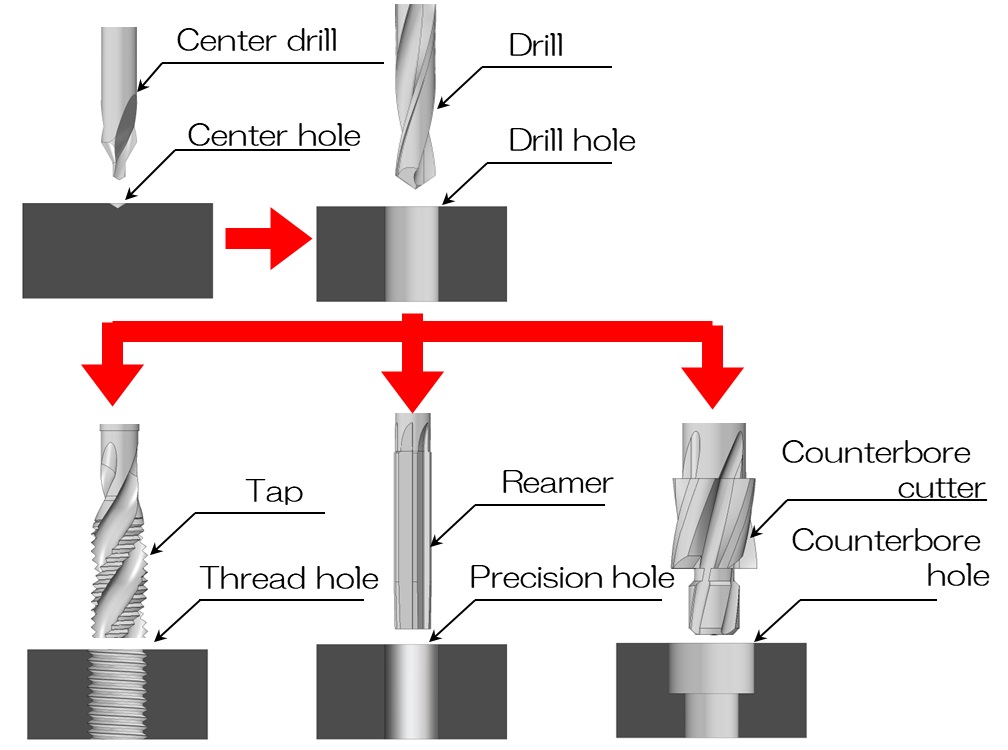 We will explain the basic flow of hole drilling and the imperfections of taps and reamers. In particular, it is often forgotten that the pilot hole must be made deeper to ensure the effective length due to imperfections.
We will explain the basic flow of hole drilling and the imperfections of taps and reamers. In particular, it is often forgotten that the pilot hole must be made deeper to ensure the effective length due to imperfections. - 004 Milling: Types and characteristics of end mills
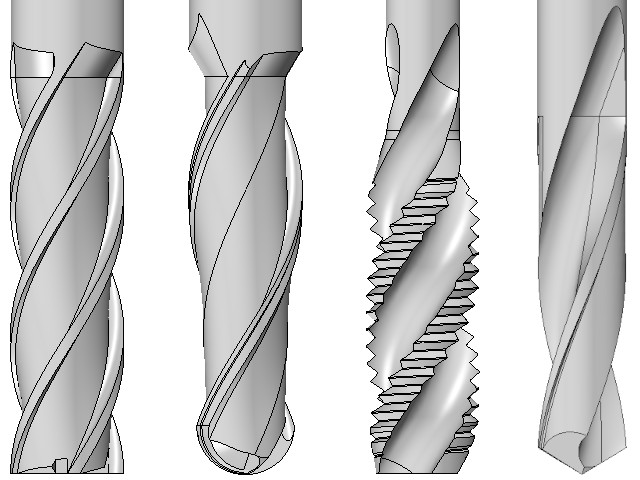 We will introduce the types and characteristics of end mills for cutting. It is broadly divided into shape machining and hole machining, and many types and sizes are used for each.
We will introduce the types and characteristics of end mills for cutting. It is broadly divided into shape machining and hole machining, and many types and sizes are used for each. - 003 Milling: Corner radius and L/D
 We will explain the corner radius and L/D constraints specific to cutting. If you imagine the machining process and set the radius and cutting depth, you will get a reasonable design.
We will explain the corner radius and L/D constraints specific to cutting. If you imagine the machining process and set the radius and cutting depth, you will get a reasonable design. - 002 Welding: Distortion and how to deal with it
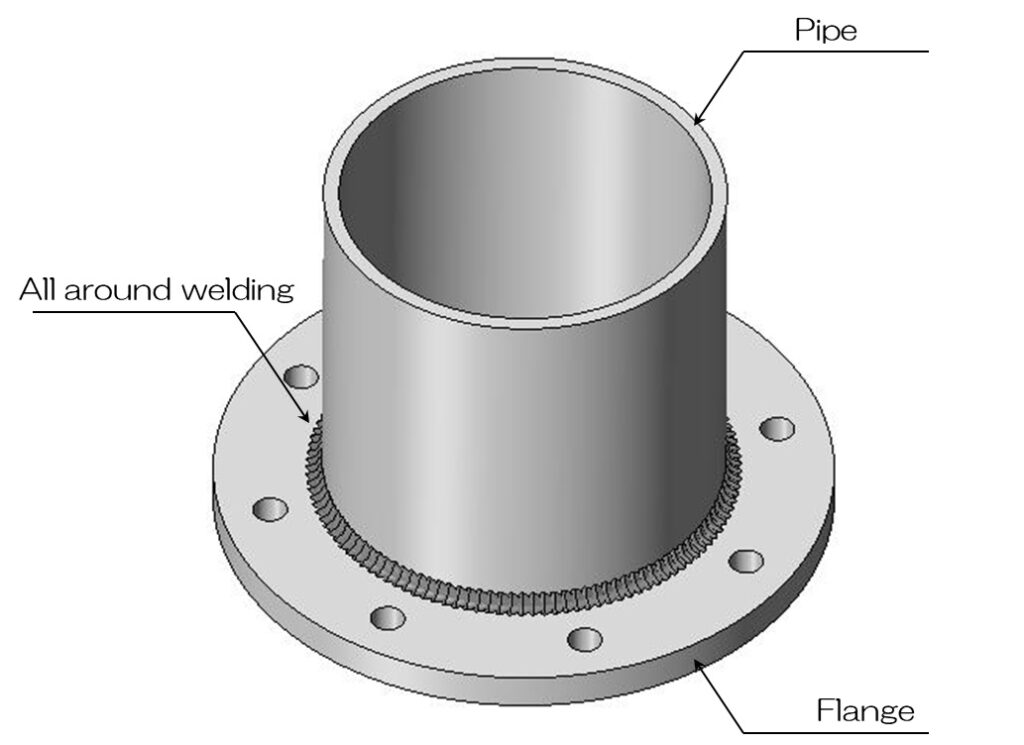 We will introduce the tendency of distortion due to welding and how to deal with it. The degree of distortion varies depending on the thinness of the base metal, the depth of weld penetration, the length of the weld leg, etc. Let's design it rationally, keeping in mind how to deal with distortion!
We will introduce the tendency of distortion due to welding and how to deal with it. The degree of distortion varies depending on the thinness of the base metal, the depth of weld penetration, the length of the weld leg, etc. Let's design it rationally, keeping in mind how to deal with distortion! - 001 Welding: Treatment of weld beads
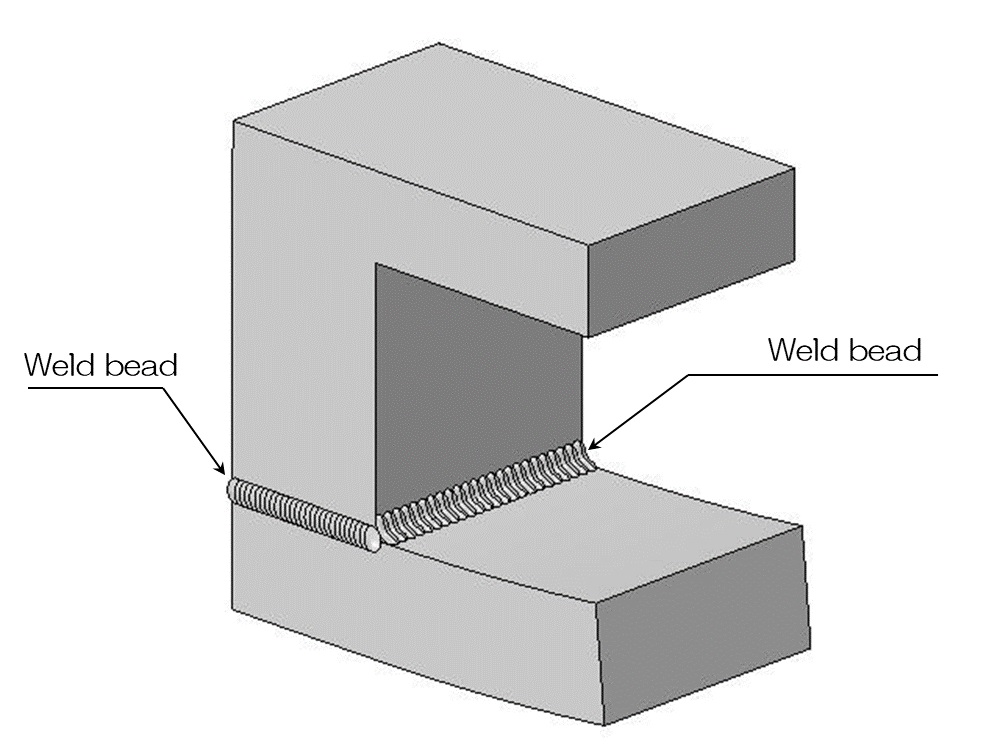 We will introduce how to treat weld beads. There are various methods of processing weld beads depending on the material and purpose, but they can be broadly divided into only removing burn and bead cutting. In the medical and semiconductor fields, beads are often cut and then buffed.
We will introduce how to treat weld beads. There are various methods of processing weld beads depending on the material and purpose, but they can be broadly divided into only removing burn and bead cutting. In the medical and semiconductor fields, beads are often cut and then buffed.




